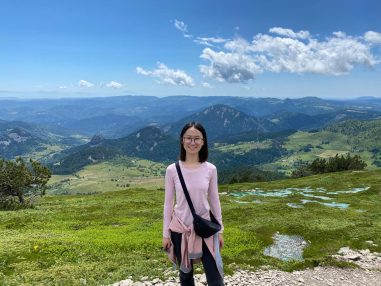Shujuan Mao: Assistant Professor
August 26, 2024

When Shujuan Mao was in middle school in 2008, the deadly 7.9-magnitude Wenchuan earthquake struck western China. Although its epicenter was some 700 kilometers southwest of her home in Xi’an, the quake violently shook the city, and her family was forced to evacuate their 30-story apartment building. They slept outside for two nights.
Experiencing this devastating disaster firsthand is what first got Mao interested in the geosciences, and specifically seismology. She started out studying earthquakes and the Earth’s interior, but through her doctoral work began to hone in on the small, continuous vibrations of the ground’s surface. These can come from ocean waves, changes in the atmosphere, and human activity such as construction and transportation.
“It’s interesting what we human beings are doing at the surface — it actually has a very, very big impact on shaping the shallow subsurface structure,” she said.
Mao uses these passive seismic measurements to monitor environmental processes such as changes in groundwater and geothermal energy, and to research carbon capture and storage opportunities.
This is an emerging area in seismology that Mao is hoping to apply to study groundwater in Austin and the surrounding areas. While working as a postdoctoral fellow at Stanford University, Mao studied two neighboring groundwater basins in Los Angeles. There was no barrier for waterflow between the two basins, but because of differing management policies over the last 20 years, Mao observed that the groundwater accumulated over this time was very different in each basin.
Groundwater could serve as a more resilient water source than surface water as global warming intensifies, Mao noted. So, the study of groundwater resources will become ever more important.
“This is where we geoscientists can make a difference,” she said. “We could really contribute to the water solution by providing a more refined study of groundwater filtrations.”
Mao is teaching GEO 391: Environmental and Urban Seismology in the fall 2024 semester.
